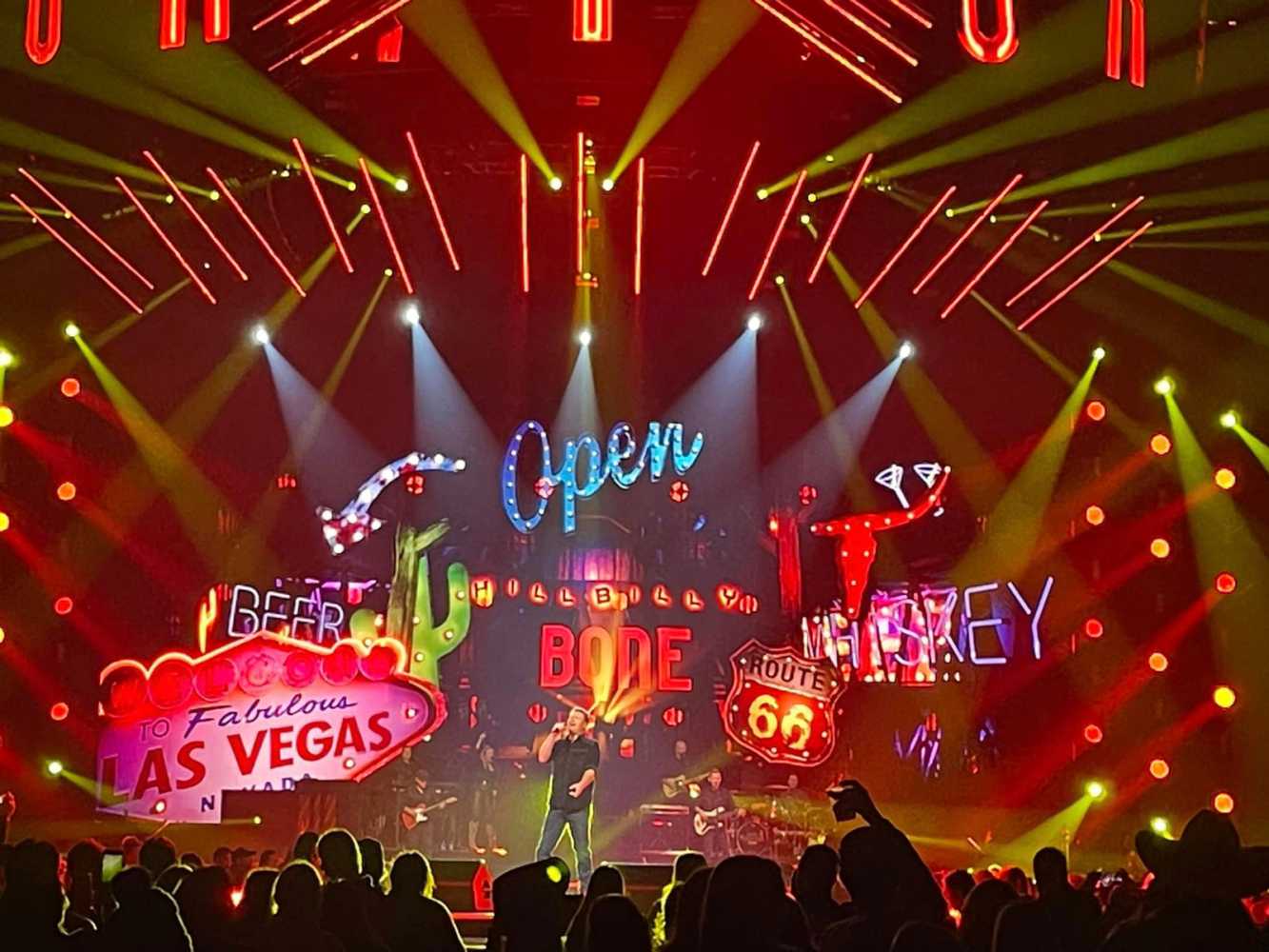Blake Shelton gets down the honkey tonk
- Details

The creative journey began when Shelton, the multi-award-winning country music superstar and coach on The Voice, said that he wanted to create the distinctive look and feel of a genuine honky tonk bar for his new 2023 tour. Co-scenic designers, Cohen and Bonniol set about creating an evocative old-school look that matched this vision. In contrast to the retro vibe they were seeking to replicate, the duo used 21st century AI technology and the Unreal engine to achieve their vision.
Working with these tools was, in Bonniol’s view “a liberating experience” that freed them from many of the constraints that have historically impacted the design process. “Steve and I started by creating an architecture for the lighting positions that reinforced Blake’s vision,” he recalled. “We then extended this “back” into content, matching the real scenic structure in terms of perspective and detail to a virtual set that consisted of roughhewn wooden beams, old bar signs, and lighting. Using Unreal engine allowed us to move incredibly fast. We could make decisions at the beginning of each rehearsal day about where we wanted to go for each song in terms of lighting and texture, and then have that scene in the server by lunch for cueing.”
The result of this process has been a set that doesn’t merely provide a setting for Shelton’s performance, but creates an immersive environment that the show lives in. Contributing to the overall effect is a richly textured light show, designed by Cohen and programmed by Felix Peralta that utilises a 4Wall Entertainment supplied rig anchored by 239 Chauvet Professional fixtures, including the Color STRIKE M, Maverick MK3 Wash and Maverick MK3 Spot.
A key part of the design’s power to engage audiences is its 3D quality, which was created through the mix of lighting, video, and scenic elements. “The realistic honky tonk environment drives everything,” said Bonniol. “Steve had come up with a concept to put a giant VIP bar down the middle of the arena. This anchored the real architecture, and then we worked to create lighting positions that reflected this kind of architecture.
“We lined trusses up to form a peaked ‘roof’ over the bar thrust,” continued Bonniol. We also built a portal or proscenium using Chauvet Color STRIKE M lighting positions to give the audience a sense that the honkey tonk had a ‘stage’ that was framed. Other parts of the lighting positions were placed to blend into the virtual set extensions. We used a variety of AI tools and were able to feed our AI datasets of images from our own concepts for the honky tonk, which the code then used to produce more elements, signs, and textures.”
Epic’s Unreal Engine allowed the designers to create this environment with precision. “Because Unreal is built for real time rendering of games at extremely high fidelity, we were able to move through creating content incredibly rapidly,” explained Bonniol.
Included in this collection of fixtures used were 108 Color STRIKE M motorized strobes which filled a variety of roles in the design. “We love the Color STRIKE’s versatility; it’s essential to our concept,” said Bonniol. “That fixture serves so many purposes. We use it as a footlight surrounding the edge of the huge thrust and B stage bar arrangement. We also use it in our architectural “roof” and “proscenium” to help define and anchor the architectural shape. Finally, we hang many of them upstage of the main video screen which is semi translucent.”
Also coming in for praise from Bonniol and Cohen was the tour LD, Scott O’Connor “an absolute artist”, Hayden Katz the “code guru” server programmer, and the team at TAIT, which built the set and collaborated with 4Wall to engineer the final product to perfection.
“This was a very gratifying project,” said Bonniol. “We had a wonderful team and we got to explore new ways of working. Using Unreal and AI really allowed us to make moments on the spot, as opposed to boxing us into pre-authored content and looks that we then had to build around. The flexibility of those tools allowed us to entertain our imagination in a really improvisational way. It makes us feel good about where design is headed.”
















